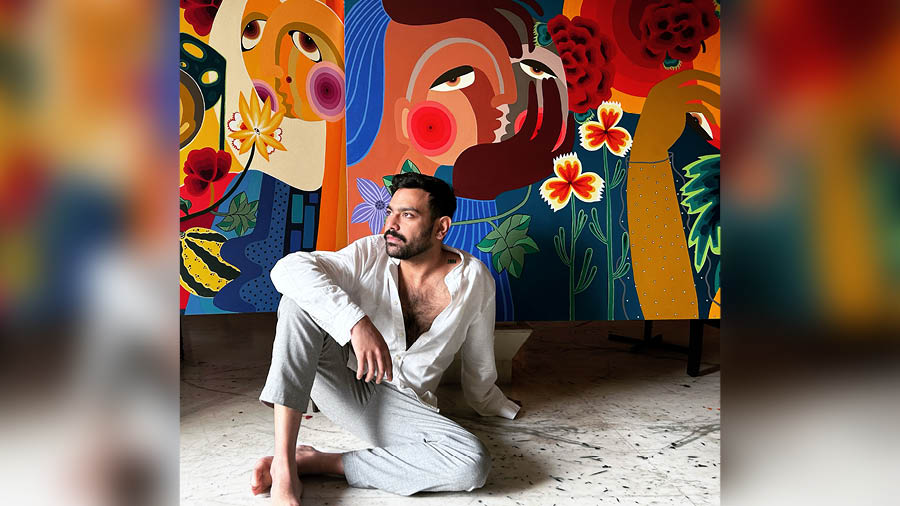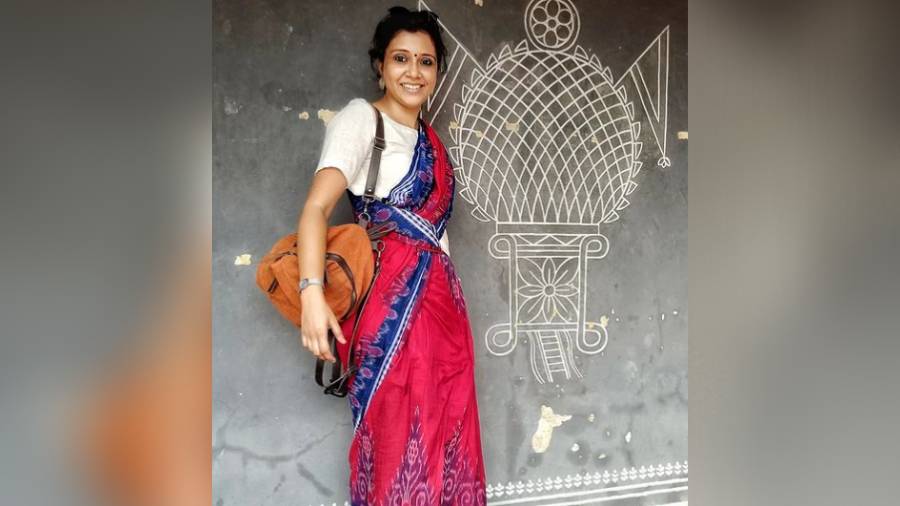In a world where trends emerge every other day, Kolkata-based Indian fashion label Bobo Calcutta has carved an individualistic style while threading together a colourful canvas of inclusivity in its designs.
Designer Ayushman Mitra aka Bobo spoke to My Kolkata about the brand, the acceptability of the LGBTQIA+ community, and how art played first guard to conflicting situations early on in life.
What is the present definition of fashion and how do you feel it will evolve over the years?
We are living in times where fashion has just become about personal expression. Style is personal and aesthetic is something so individualistic that I don’t believe anything is in or out of fashion. Everything falls under this massive umbrella that celebrates diversity and cultures from all over the world.
How do you view the world as a well-received designer?
Being a designer has given me the courage to address liberation of love, queer rights, and animal welfare. These are subjects that were earlier not part of the fashion fabric of India. What my work does now is it initiates a conversation — people always want to know what the outfit is all about.
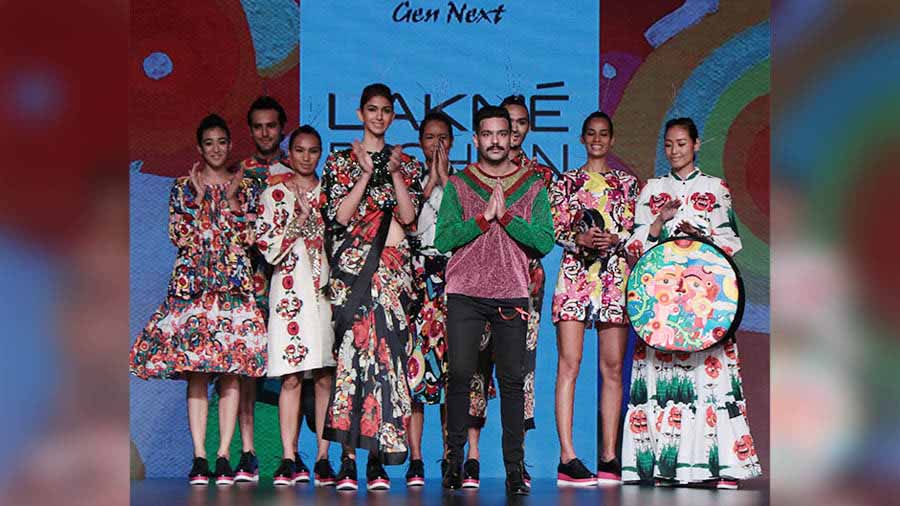
Bobo’s debut at Lakme India Fashion Week, 2018
Your thoughts on acceptability of the LGBTQIA+ community, and what should be the driving force that accelerates it?
Honestly, we have reached a place in the present socio-demography of India that I didn’t imagine we would be in. In the last five years, irrespective of the government, I was scared about things going the other way, but it hasn’t. I have to admit that has left me surprised. To the community today, it’s not only about queer people anymore but also about their allies. One draws their strength from seeing the allies achieve so much that it makes us strive for greatness. Although, we still have a long way to go.
Who are your icons from the LGBTQ community?
Rituparno Ghosh is my icon. When I have some free time, I like listening to his experiences. Freddie Mercury has to be next for me. I’ve been told I look like him. Also, Frida Kahlo, who was famous for her self portraits and exploring her sexuality.
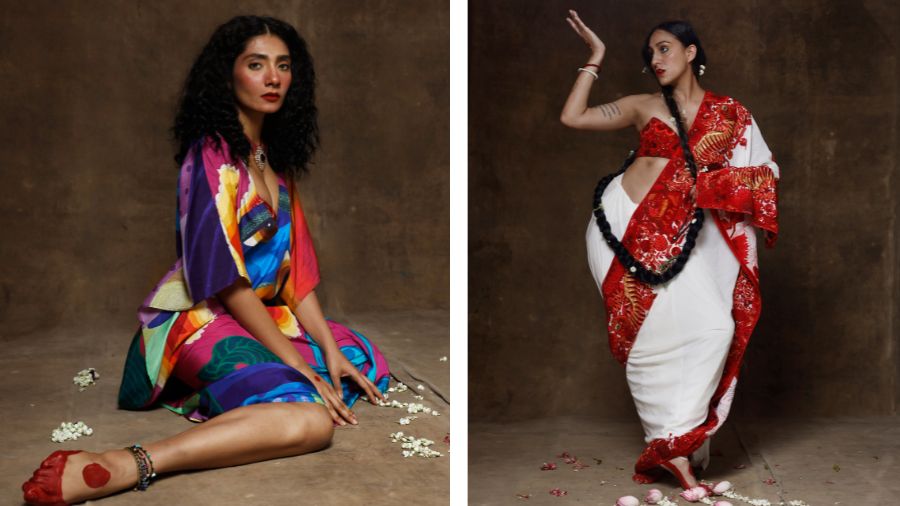
L-R: Sneha Ghosh and Karuna Ezra Parikh in designs by Bobo Calcutta
How did your days in Mayo College, Ajmer, shape you and how much of your success can you credit to it?
Honestly, I never gave this much thought as I was so driven to achieve my goals in art, theatre and debate. Meanwhile, I also fell in love a lot, got my heart broken, and made cards for friends, which they gave to their girlfriends. It was beneficial to figure out that art was my guard at an early stage. I had always given it so much importance that with every interaction or conflict, art played the role of the first guard.
You are also an artist and many of your creations are essentially translations of your art. Can you take us through the process of canvas to clothing?
In a month, there are seven to eight canvases made, they are then scanned and put on the table for creating a mood board. Rahul Podder and Plabani Saha, who are young fashion experts, play an integral part in the ideation process of Bobo Calcutta. Personally, Plabani likes to play around with silhouettes, while Rahul, a painter, addresses the graphic part of designing.
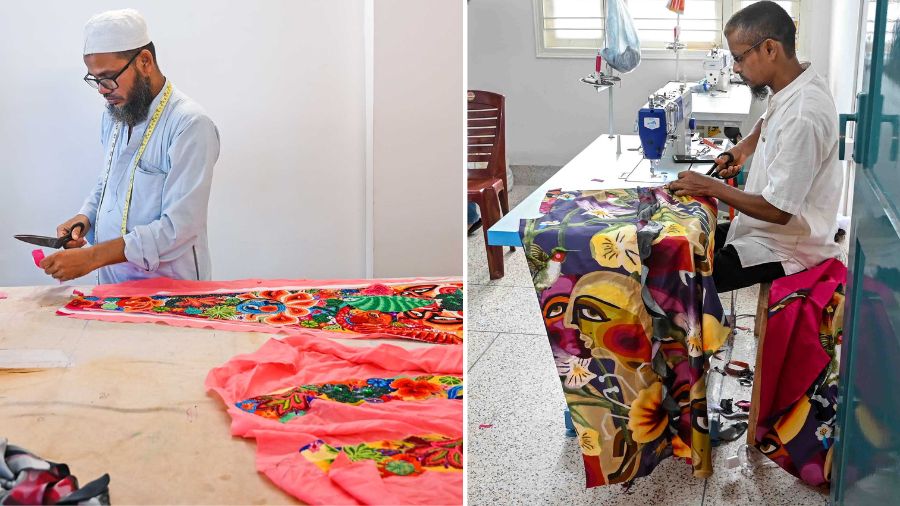
L-R: Yazul Rahman Laskar, cutting master, and Jiaur Rahman Mondal, tailor, working on designs
Next, we finalise designs, and then a coterie of karigars at Bagnan District, West Bengal, work on an adda, which is used to stretch the fabric for stitching and embroidery. Once the clothes are ready, they go to our four stores in Mumbai, Kolkata, Hyderabad, and Ahmedabad.
What drew you to art, and how has your art evolved over time?
My grandfather was a painter and during the holidays, I would visit his studio. He held my hand and made me draw on the canvas. There is also a lot of similarity in his art and mine. Mayo also had a great art school and a great amount of my time was spent there as well.
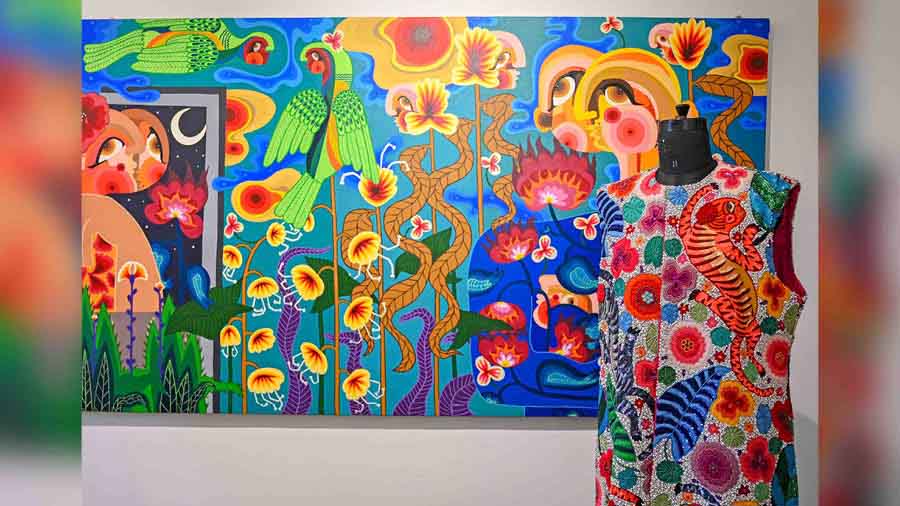
An artwork by Ayushman, whose designs are often translations of his art
In the early days, my art was spiritually influenced and had a lot of Ganesh and Durga elements in it. I am a very spiritual person but it doesn’t show in my art anymore. Later on, I went to Soho, London, the queer heart of the world, before which I learnt cinema at St. Xavier’s College, Kolkata. Once I started working in fashion, these experiences became integral to my work.
Do you have a favourite collection, or one that is special to you?
The collection Dance of a Thousand Gods is really special. If one goes through the pictures, they’ll find an evident connection with divinity and sexuality that comes through in the composition, with motifs of alta and traditional flowers, so the hardcore Bengali in me does come out through this.
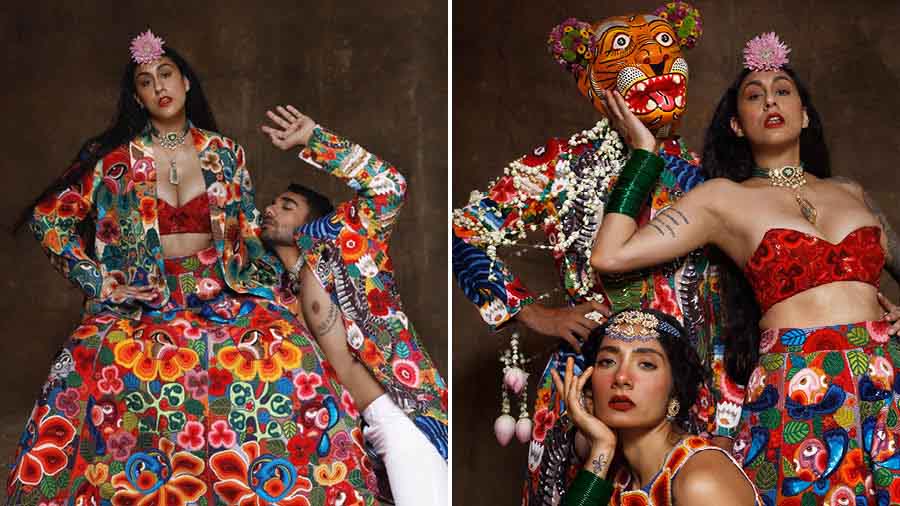
Karuna and Sneha is designs from ‘Dance of a Thousand Gods’
Your designs are characterised by their bright bold colours and prints. Any motifs that find a place often in your designs, and why?
Yes, the split face is one of them. I have actually tattooed them on both my hands and they are the first motifs I drew. They portray genderless faces, symbolising the ego and alter ego and the motif is about self acceptance. It is also our company logo.
You have mentioned in interviews before about how your coming out journey was “blessed” thanks to your family's support. For those who might be struggling with the idea, what would you tell them from your own journey?
Coming out is a personal decision and there is no right or wrong time, neither is there a right or wrong way to do it. The day you feel it, nothing in the world can stop you. Until then don’t succumb to pressure. If you are not ready to handle that, then nobody in the world can stand by you or make you feel the way you want.
Since you have experienced what it is like to have good allies, do you have any advice for those who might want to be better allies?
I believe in the sponge theory. If you’re new to the LGBTQIA+ community, just try soaking in. You’ll end up holding on to something and your own understanding of the community will become so personal with time that you won’t have to think about what is right or not.
Over the years, what has changed in your creative process when it comes to building up a certain collection?
There is a lot that has evolved. When I started drawing as a kid, I used to only draw in black and white because I was afraid of experimenting with colour until Standard 11, but it all changed one day and now I can’t stop playing around with colour. After colours, prints came in next. Currently, I’m in love with embroidery at a level where the team at Bobo Calcutta needs to push me to print.
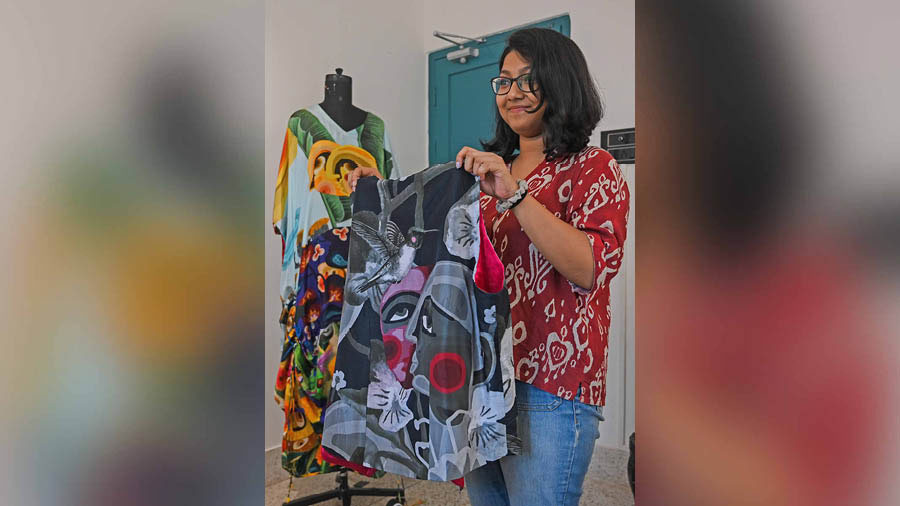
Plabani holds up a waistcoat from Bobo Calcutta’s first black-and-white collection, due to launch in July
What is in the works next from Bobo Calcutta?
We are doing a collaboration on seven prints with the Bombay Shirt Company next week for all their 14 stores, including the one in New York. Another such collaboration is with Seva Candles, a Mumbai-based firm that donates half their profits for cataract operations. These collaborations are great fun because art is a thing that allows you to work with any surface. Personally, I feel art is not something that should be stuck in a fancy house, it should be visible for people to view and to start a conversation.
